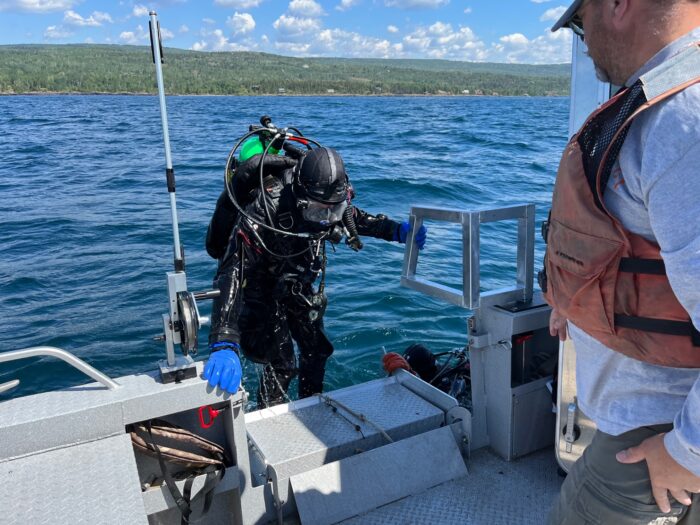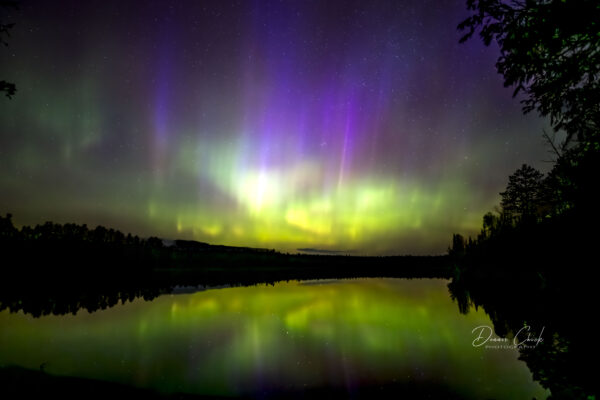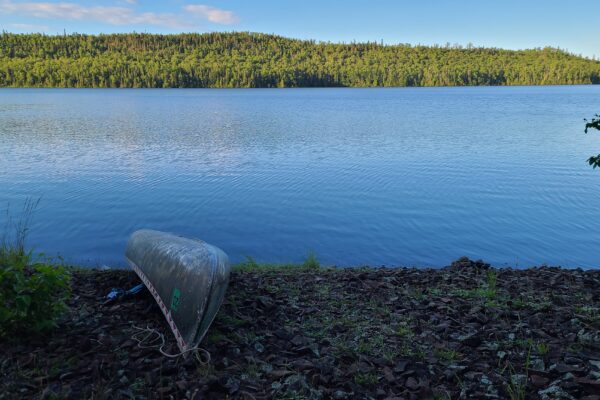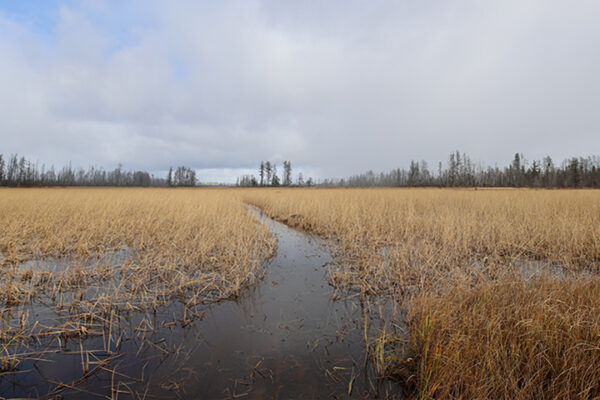DNR researchers dive to bottom of Lake Superior near Grand Marais in search of ‘rock snot’
The bottom of Lake Superior is a world most humans never get to explore.
It makes sense, with Lake Superior being hundreds of feet deep within eyesight of the shoreline near Grand Marais. Factor in, too, the cold water Lake Superior is famous for along the Minnesota coastline. That being the case, a team of researchers with Minnesota Department of Natural Resources are hoping to better understand what’s growing on and using the rocks at the bottom of Lake Superior.
And this particular research is being done with fish in mind.
Heidi Rantala is a Minnesota Department of Natural Resources fisheries research scientist. She’s been featured in several WTIP stories in recent years, often talking about a particular type of algae that lives in Lake Superior. More recently, the algae, known commonly as ‘rock snot, was found in numerous rivers along the North Shore.
Rock snot, officially called didymo, was the centerpiece of the underwater research the DNR recently conducted in Lake Superior. Rantala and several other DNR researchers, fisheries biologists and members of the state agency’s aquatic invasive species unit traveled to Grand Marais in late July to collect samples from the bottom of Lake Superior.
The purpose of the research expedition onto Lake Superior in July was to see how much algae is present on suspected lake trout spawning habitat in Lake Superior. Despite their recent survival success story in Lake Superior, much remains unknown when it comes to where lake trout spawn in the Big Lake.
In order to collect samples from the bottom of Lake Superior along a reef not far from where Cutface Creek flows into the Big Lake, divers Rich Rezanka and Tim Plude were brought along for the expedition. Both certified divers and members of the DNR’s aquatic invasive species unit, the duo dove to depths ranging from 80 ft. to less than 10 ft. They carried a mesh bag with small plastic containers resembling beakers to collect algae from the lake bottom.
What they found in late July on the reef not far from Highway 61 and Cutface Creek is this: In the very shallow, wadeable waters of Lake Superior, researchers found low abundances of didymo at five places, from the mouth of the Gooseberry and north toward Grand Marais. The only didymo researchers found in the diving sites (2-16 meters) was at 2-meter depth on the Gooseberry reef. They did not find didymo at the Cutface Creek location. The algal growth from the Cutface Creek samples were a diatom species other than didymo, Rantala said.
According to the DNR, didymo live in low nutrient, low-temperature environments that are common in North Shore streams and Lake Superior. Under the right conditions, this type of algae can form dense mats of brown slime that smother streambeds, according to the DNR. It is also quite unpleasant by physical appearance, though it does not present a danger to humans. That being the case, in the summer of 2020, it was being confused for toilet paper and human waste floating in Lake Superior.
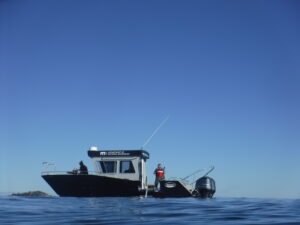
Photo courtesy of DNR
Anglers, swimmers in wetsuits and others recreating in and around the Grand Marais Harbor this summer have noticed an abundance of algae. Researchers told WTIP in early August that they’ve noticed the large amounts of algal growth in the harbor at Grand Marais this year as well. There are two types of algae that are common in the harbor, according to Mark Edlund, a senior scientist with the Science Museum of Minnesota. The green rings around the large rocks in the wave zone are a green alga called Ulothrix, Edlund said.
“It always reminds me of a tonsure–the ring of hair that medieval monks had on their heads,” he noted.
This type of algae is common in Lake Superior in areas with cobble and boulder shorelines. The other is the brown goo that is mostly diatom communities.
“We did not collect samples at Grand Marais Harbor last time I was up so can’t be sure if it is or is not didymo,” Edlund said. “I would expect there to be some didymo there.”
Edlund said the research time will collect samples from the Grand Marais Harbor later this month to learn more.
Meanwhile, WTIP Outdoor News Podcast host Joe Friedrichs joined the researchers in late July on board a 31-ft DNR boat and shares this report.





